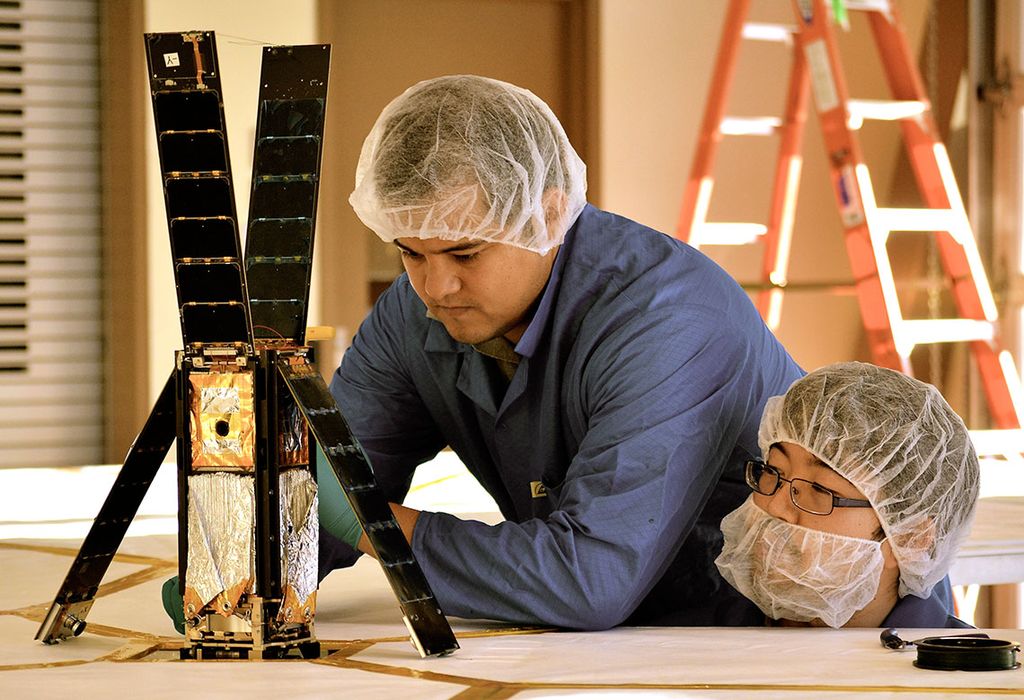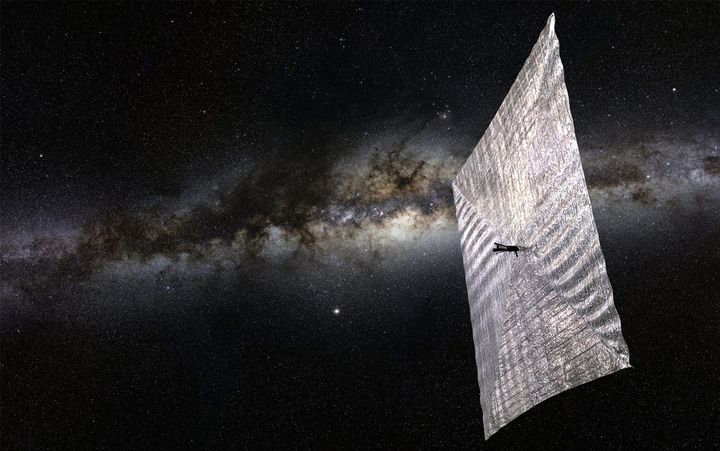
Carl Sagan - the legendary astronomer who wrote Contact and hosted the famous PBS series Cosmos - once envisioned a spacecraft that relied on reflective sails and the sun's radiation to propel itself through space. Known as a "solar sail", this craft would require no propellant or engines, and could fly indefinitely so long as its sails remained intact and there was enough "solar wind" to push it.
Decades later, the Planetary Society - a non-profit which Sagan co-founded that is dedicated to astronomy and planetary science - is working to make this vision a reality. Their solar sail concept is known as the LightSail; a CubeSat that is no larger than a breadbox, but which comes with four reflective Mylar sails that measure 32 square meters (344 square feet) when fully deployed. The result of many years of work and public support, the LightSail might just be the future of small-scale and commercial space exploration.
Back in 2009, the Planetary Society began the development process when they announced their intention to build a viable solar sail spacecraft. A year later, the Society took over NASA's NanoSail-D project - a nanosatellite that deployed NASA's first-ever solar sail in low-Earth orbit. Renaming the project LightSail, they began developing a larger model of the design.
By 2011, their first full-sized test model (LightSail-1) passed its critical design review, which was conducted by a team of project veterans that included members of NASA's Jet Propulsion Laboratory (JPL) and the Aerospace Corporation.

Bill Nye, the CEO of the Planetary Society, is looking to make Carl Sagan's vision of a solar sail spacecraft a reality. Credit: sail.planetary.org
Relying on membership dues and private donations, the Planetary Society was able to raise the $1.8 million USD that was needed to build LightSail-1 and test its systems. This past May, the prototype was launched into a suborbital position onboard an Atlas V rocket, where it successfully deployed its four sails and validated other key systems.
After a series of problems - which included a software malfunction and contact being lost twice - the craft was retrieved after re-entry on June 10th, 2015, and the test was declared a success. The next step, according to the Planetary Society, is to deploy the LightSail into orbit aboard a SpaceX Falcon Heavy, where it will be far enough away from the Earth's atmosphere to utilize the sun's rays to generate propulsion.
This mission, which is scheduled for 2016, will be the LightSail's first major test and is expected to cost an additional $1.2 million USD. To raise this money, famed TV host and science educator Bill Nye - the "Science Guy", and CEO of the Planetary Society - launched a crowfunding campaign via Kickstarter back in May.
Initially, Nye and the Planetary Society were asking for the modest sum of $200,000 USD to get the ball rolling. However, as of June 26th, 2015, the campaign managed to successfully raise $1,241,615 USD. With their funding secure, the Planetary Society is moving ahead with development and looking forward to their first major orbital test next year.

LightSail team members prepare the spacecraft, which is no bigger than a breadbox, for a sail deployment test. Credit: Planetary Society
To be fair, this isn't the first solar sail ever to be constructed or deployed. In June of 2010, the Japan Aerospace Exploration Agency (JAXA) deployed their IKAROS probe, which also utilized a solar sail. In addition, NASA's NanoSail-D was successfully deployed in 2010 and spent more than 240 days in orbit around the Earth before the Planetary Society acquired the program.
However, LightSail is special in that it is a publicly-funded space venture, which is becoming increasingly popular. What's more, with a price tag of $4.5 million USD, the LightSail has been very cost-effective compared to most federal space programs. Combined with the cost benefits of a solar sail, which does not rely on heavy rockets or require fuel, the concept could be another cost-cutting measure comparable to Elon Musk's development of a reusable launch system.
If all goes well, the LightSail could help to make space exploration more affordable and more practical for many organizations. Research, testing and development could blossom as a result, as more and more companies are able to send their experiments into space!
Got ideas on how space exploration could be made cheaper and more accessible? Then head on over to the Launch your Challenge page and be prepared to make a difference!
Top Image Credit: Josh Spradling/The Planetary Society








